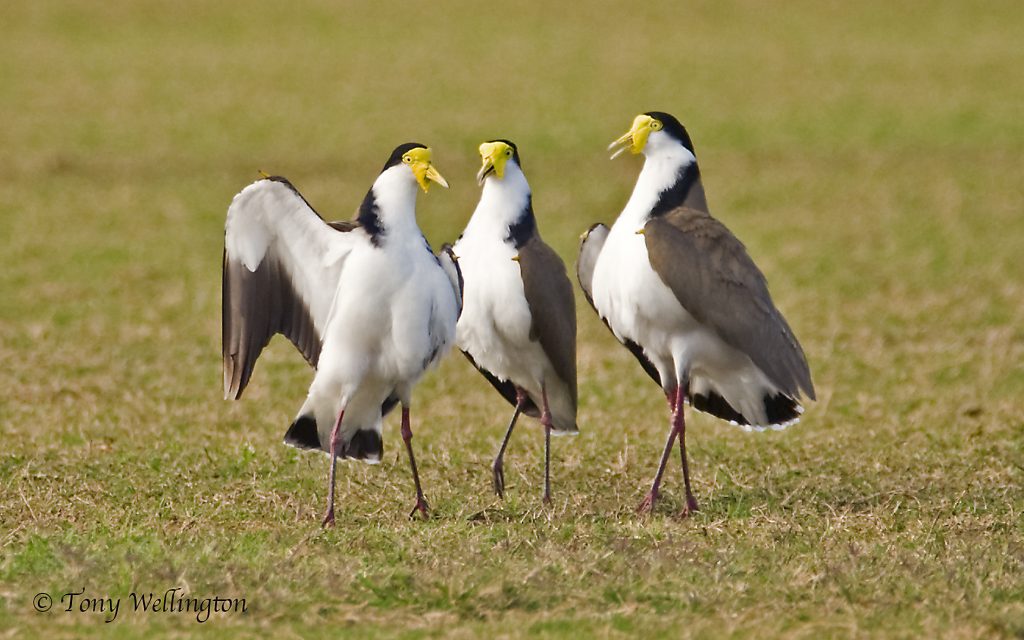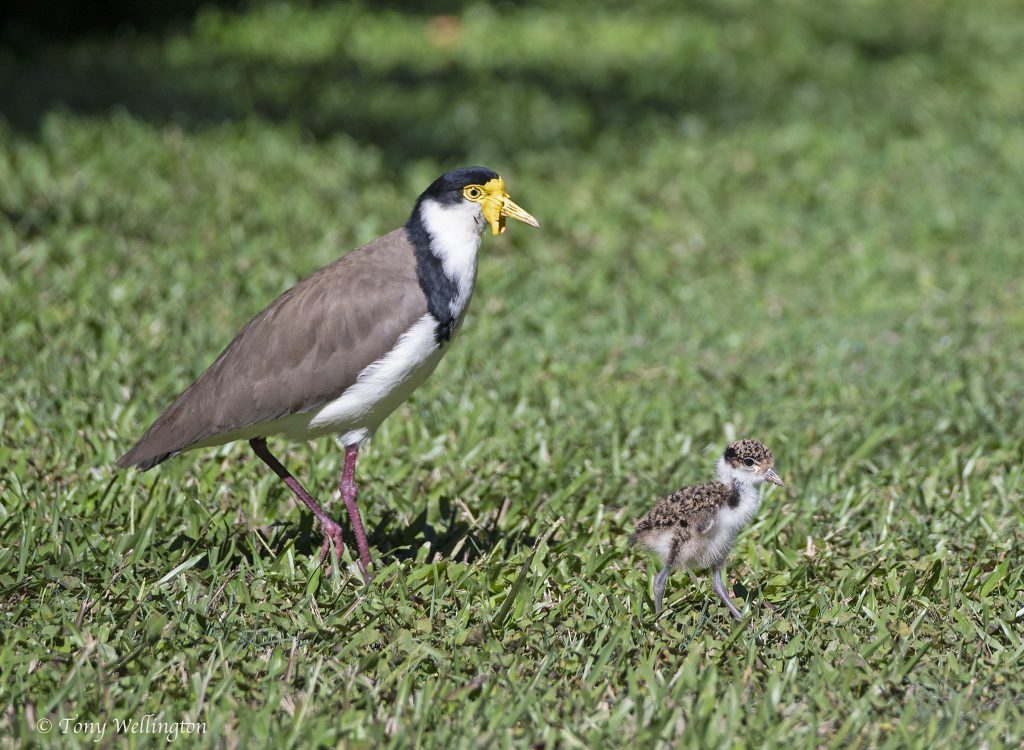
The Masked Lapwing (also known as the Spur-winged Plover) has benefitted from human development. Like humans, these handsome birds are rather partial to open grassed areas, from where they can command a good view of their surroundings. Mown lawns and sporting ovals suit them down to the ground. And it is the ground that they frequent, working diligently to remove insects and worms whilst keeping an eye out for danger.

Their most unusual feature, apart from the bright yellow wattles on each side of the face, is the thorny spur that projects from the ‘wrist’ on each wing (you can see them in the image of the three birds arguing with one another). Our First Nations people likened the birds to spear carriers.
The nest is little more than a scrape on the ground. These can be located on lawns, flat roofs or even roundabouts. When humans or animals stray too close to the nest, the parents put on a fine display with much hollering and swooping. Thankfully, they rarely make contact with those built-in harpoons. Sometimes the adults will put on an Oscar-winning performance: pretending to have a broken wing whilst limping about to lure a predator away from their chicks. At a specific call from a parent, the chicks know to hunker down and try to become invisible.

Researchers have found that developing Lapwing chicks can call their parents from inside the eggs, perhaps to request more warmth? Once hatched, the chicks are like little powder puffs, but they can feed themselves within hours of emerging.
The young may stay with their parents for up to two years, resulting in four or more birds sharing the same territory. This is yet another Australian native that we have gifted to New Zealand.
